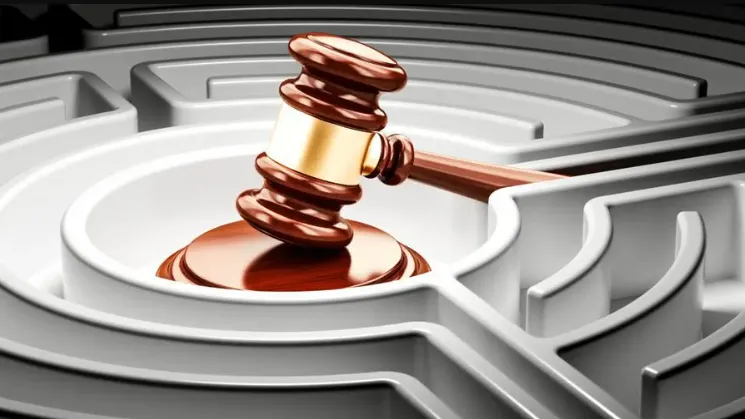What Are the Non-Economic Damages of a Personal Injury Case?

Economic and non-economic damages are the two primary categories into which personal injury law often separates claims. Economic harms have a monetary worth and can be measured with ease. On the other hand, non-economic damages often prove more challenging to assess and assign a monetary value to.
However, these non-economic damages are equally crucial as they address the intangible losses and suffering experienced by the victim. The complexities of non-economic damages in personal injury cases are covered in detail in this article. It explores their significance, assessment, and impact on the overall compensation awarded.
Contents
Defining Non-Economic Damages
As defined by Forbes, non-economic damages refer to the intangible losses a person suffers due to an injury or accident. They include a variety of subjective, non-financial damages like suffering, mental anguish, diminished quality of life, etc.
Pain and Suffering
In personal injury lawsuits, pain and suffering play a big part in non-economic damages. This encompasses the victim’s immediate physical and psychological suffering due to the injury.
While physical pain may be temporary or permanent, emotional suffering can manifest in various forms, such as anxiety, depression, fear, and trauma. Assessing the extent of pain and suffering requires consideration of various factors. These may include the injury’s severity, the pain’s duration, impact on daily activities, and any resultant mental anguish.
Consider the example of a recent accident that occurred at Leon Corlew Park & Splash Pad. According to The Telegraph, the mother of a four-year-old is suing the city of Edwardsville and an architectural company. She alleges that her son broke his leg after using a water slide and then going on to play in a park.
She claims that the city and the firm knew that wet equipment could cause injury. However, they still allowed users to travel from the splash pad to the playground. The suit demands compensation for a broken leg as well as the pain and suffering of her son.
Like in the above example, assume you were involved in an accident in Edwardsville. In such a scenario, you can hire an Edwardsville personal injury lawyer to assess your pain and suffering and claim compensation. The attorney will have the right experience to handle such cases and negotiate for the settlement amount for your pain and suffering.
Emotional Distress
According to TorHoerman Law, an accident can have a devastating psychological effect in addition to physical ones. Depression, anxiety, and post-traumatic stress disorder (PTSD) may arise from this.
These psychological effects may have a significant negative influence on the victim’s relationships, general well-being, and quality of life. They often necessitate therapeutic intervention and ongoing support.
An NCBI study was conducted to evaluate the emotional distress victims may face after injuries. It included 3060 patients and monitored distress for six months post-injury. The study concluded that 22% of the patients had a probability of some mental health issues even after six months. Around 14% had scores indicative of anxiety disorder, 16% had depression, and 6% had post-traumatic stress disorder (PTSD).
Loss of Enjoyment of Life
The loss of enjoyment of life is another non-economic damage that is frequently addressed in personal injury cases. This speaks to the injured party’s loss of ability to partake in endeavors and activities that used to make them happy, fulfilled, and satisfied.
Whether participating in hobbies, sports, social gatherings, or simple everyday activities, the loss of enjoyment of life can diminish overall happiness. This can lead to frustration and isolation, further impacting mental health.
As Lawyers.com points out, not all states consider this a separate category for compensable losses. Some states consider it part of general damages or blend it with pain and suffering. Therefore, you should always research and see if your state considers it a separate category before filing a lawsuit.
Loss of Consortium
According to FindLaw, loss of consortium refers to the deprivation of companionship, affection, or support caused by injury to the victim. Since the injured party would lose company, the injured party’s spouse or family usually provides it.
When a person is injured, their loved ones may experience a significant diminishment in the quality of their relationships and interactions. Loss of consortium acknowledges the impact on family members who must cope with the challenges and changes brought about by the injury.
Assessing Non-Economic Damages
Economic damages are quantifiable using hard financial data, like hospital bills and missed income. However, assessing non-economic damages involves a more subjective evaluation.
Personal injury attorneys, judges, and juries consider various factors when determining the appropriate compensation for non-economic damages. These could include the degree of pain and suffering, the severity of the injury, how it affected the victim’s day-to-day activities, etc.
Caps on Non-Economic Damages
Statutory caps or limitations apply to non-economic damages in personal injury cases in certain jurisdictions. These ceilings are meant to keep the legal system predictable and stop disproportionate jury verdicts.
Critics counter that these caps may unfairly restrict the amount of compensation that victims can receive, especially in situations where catastrophic injuries are involved. The debate over caps on non-economic damages continues to be a contentious issue in personal injury law.
Frequently Asked Questions
Do Non-Economic Damages Cover Only Physical Injuries?
Non-economic damages may also compensate for emotional distress, psychological trauma, or other intangible losses brought on by another party’s carelessness or misconduct.
How Are Damages That Are Non-Economic Determined?
Non-economic damages are more arbitrary than economic damages, determined by actual monetary losses. When determining the amount of non-economic damages, a number of factors are taken into account, including the severity of the injury and the extent of pain and suffering.
Do Non-Economic Damages Have a Limit?
Certain states have caps or limitations on non-economic damages in cases involving personal injuries. These caps change depending on the jurisdiction and the kind of injury involved. States have declared caps on non-economic damages to be unconstitutional, though.
Is It Possible to Negotiate Non-Economic Damages in a Settlement?
Yes, during settlement negotiations between the parties to a personal injury case, non-economic damages may be discussed. A mutually agreeable settlement amount may be reached after both parties have had a chance to present their case and supporting documentation.
How Does a Jury Decide Which Non-Economic Damages to Award?
In cases that proceed to trial, the jury decides how much non-economic damages to award the plaintiff. To determine a just and reasonable compensation amount, jurors consider all evidence presented during the trial. These include expert and witness testimony, medical records, and other pertinent information.
In summary, non-economic damages play a crucial role in personal injury claims. They compensate the victim for suffering and intangible losses. Important components of non-economic damages include pain and suffering, emotional distress, loss of enjoyment of life, and loss of consortium. They need to be thoroughly considered and assessed in the pursuit of recompense and justice.
There may be difficulties in calculating these damages. However, their recognition and acknowledgment are crucial in providing holistic support and restitution to those affected by negligence or wrongful conduct.



